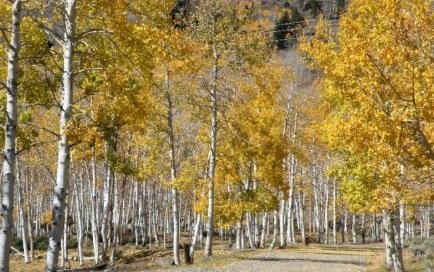
Nestled in the heart of Utah, Pando is a natural marvel, recognized as one of the world’s oldest and most extraordinary living organisms. Often mistaken for a forest, Pando is actually a massive clonal colony of quaking aspen trees (Populus tremuloides), all interconnected by a single, extensive underground root system. This unique characteristic unites approximately 47,000 trees across 106 acres, making it a single, colossal organism that has intrigued scientists and nature enthusiasts alike.
A Journey Through Time
Pando’s origins trace back to an astonishing timeline. Researchers estimate that it may have sprouted from a single seedling around 34,000 years ago. Some even suggest that its roots might stretch back as far as 80,000 years, placing it among Earth’s most ancient living entities. Such longevity underscores its resilience and ecological importance, standing as a testament to nature’s enduring power.
The Genetics of a Giant
Unlike most forests, all the trees within Pando are genetically identical, a result of asexual reproduction through root cloning. This genetic uniformity was confirmed through extensive research involving 500 samples, which identified 4,000 distinct mutations. The findings revealed a surprising complexity: trees situated close together shared only slightly more genetic mutations than those farther apart. This discovery adds an intriguing layer to Pando’s genetic story, challenging conventional notions of clonal organism simplicity.
A Pillar of the Ecosystem
Pando is not just a botanical wonder; it is a vital component of its surrounding ecosystem. Its vast network of roots stabilizes soil, preventing erosion and supporting the health of the environment. Additionally, it provides a sanctuary and sustenance for a diverse array of wildlife, from insects and birds to deer and elk. The organism’s survival is intertwined with the well-being of the ecosystem it sustains.
Challenges to Survival
Despite its ancient legacy, Pando faces significant threats. Climate change, human activities, and grazing pressure from deer and elk jeopardize its delicate balance. Understanding its resilience and ecological contributions is imperative for devising strategies to protect this natural treasure.
Rivals in Longevity
Pando’s age, while remarkable, may not be unique. For instance, Posidonia oceanica, a seagrass species found off the Spanish island of Formentera, could be over 200,000 years old. These discoveries emphasize the need for continued research into ancient clonal organisms, offering insights into the secrets of longevity and environmental adaptation.
Preservation and Future Insights
Efforts to study and conserve Pando are crucial for maintaining its ecological legacy. Researchers like Rozenn Pineau from the University of Chicago have been pivotal in uncovering its genetic complexities, providing valuable knowledge to guide conservation efforts. Protecting Pando is not just about preserving a singular organism—it’s about safeguarding an ecosystem and understanding nature’s capacity for endurance and renewal.
Fast Facts
- What is Pando? A clonal colony of quaking aspen trees in Utah, spanning 106 acres and comprising 47,000 genetically identical trees.
- Age: Estimated at 34,000 to possibly 80,000 years old.
- Ecological Role: Stabilizes soil, prevents erosion, and supports diverse wildlife.
- Competitor: Posidonia oceanica seagrass, potentially over 200,000 years old.
- Scientific Research: Led by Rozenn Pineau, findings highlighted unexpected genetic variations within Pando.
Pando stands as a symbol of nature’s resilience and interconnectedness. As we deepen our understanding of this extraordinary organism, we also gain insights into preserving Earth’s delicate ecosystems for generations to come.

